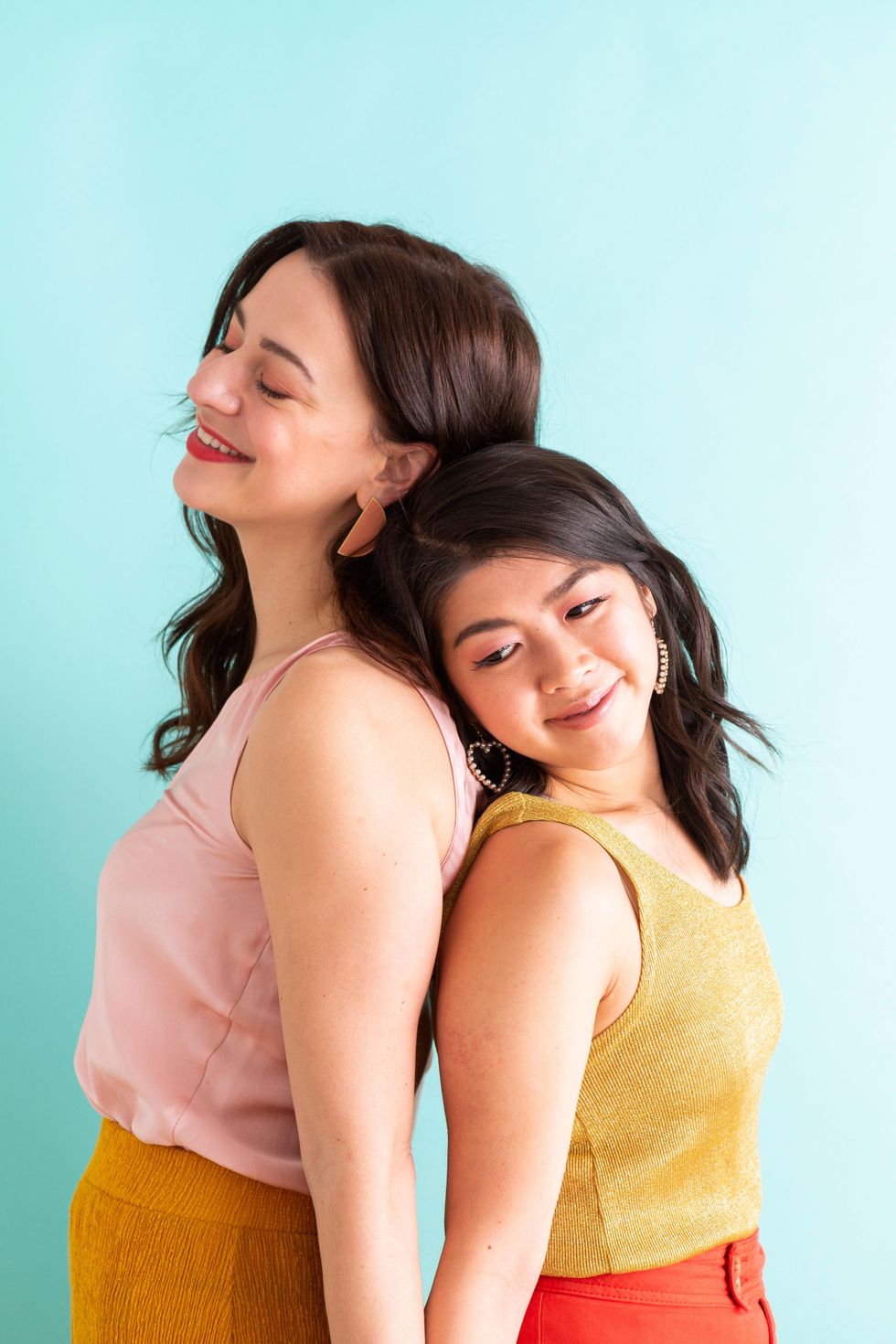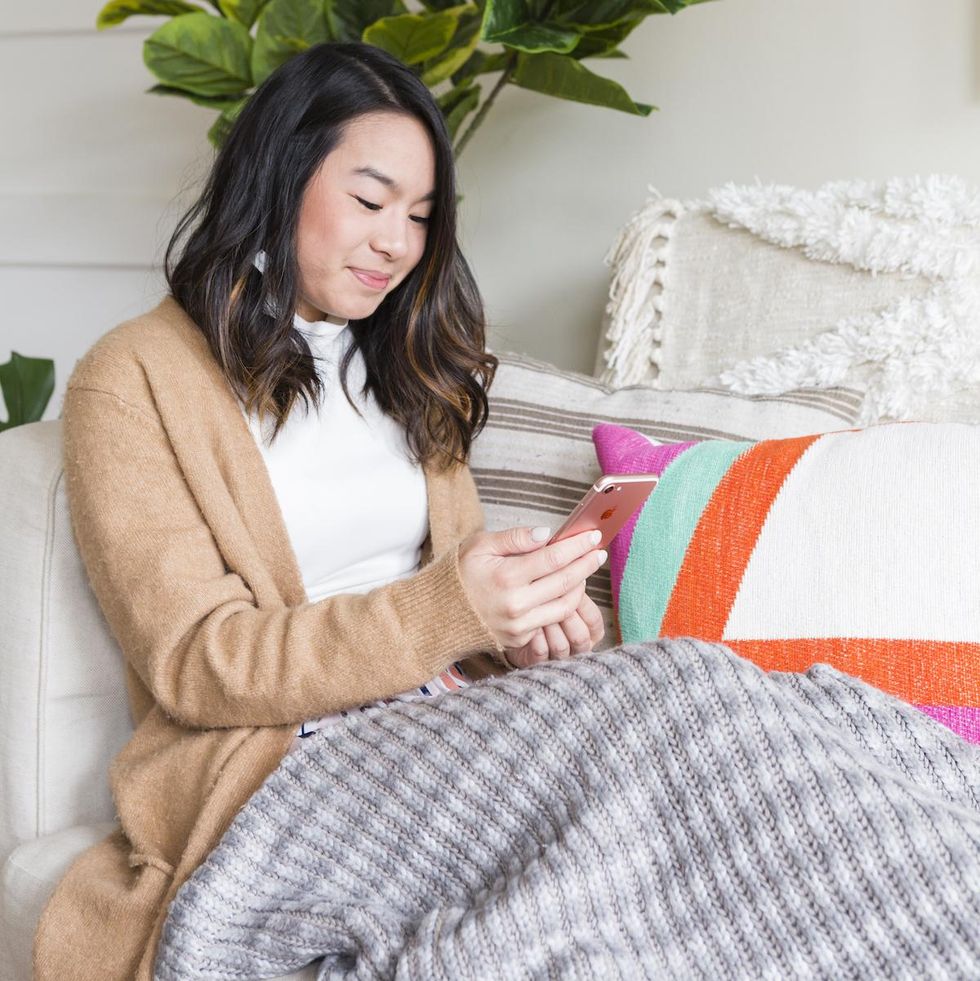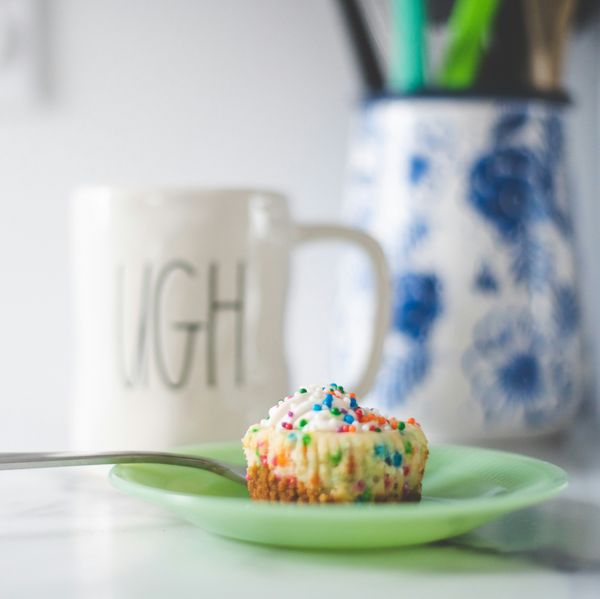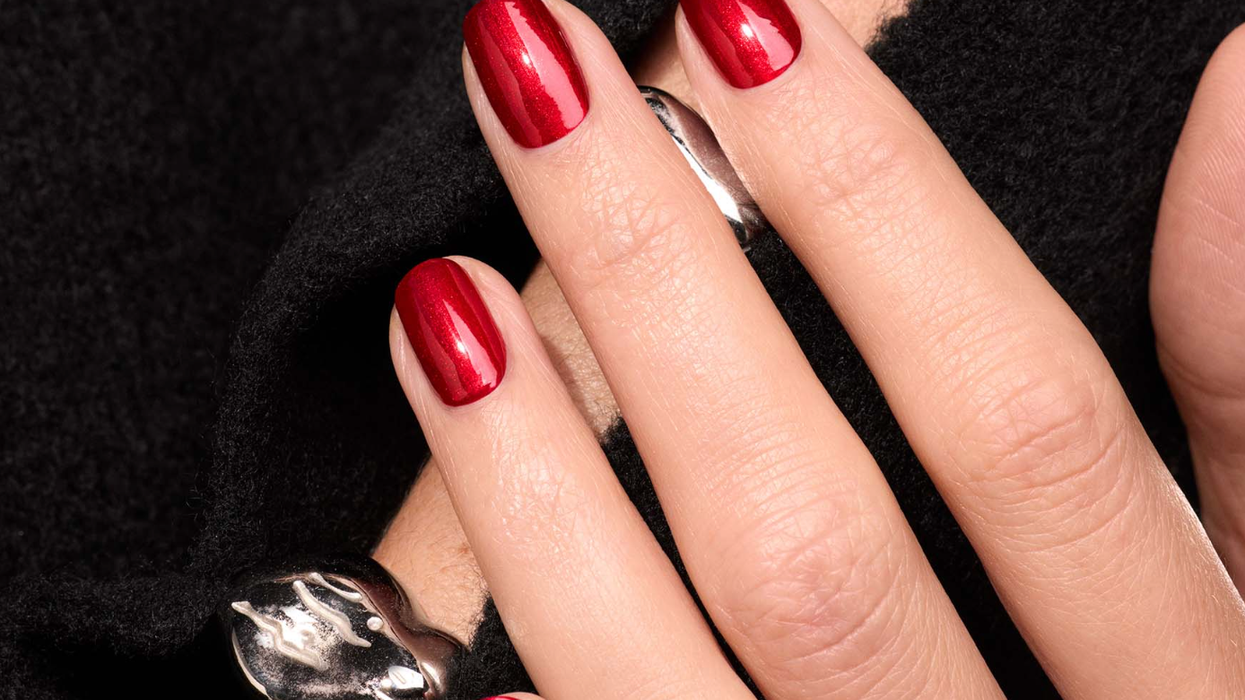Six ways to distance yourself when social media takes a toll on your well-being.
The Science Says: How Social Media Impacts Our Mental Health

Theresa Gonzalez is a content creator based in San Francisco and the author of Sunday Sews. She's a lover of all things design and spends most of her days raising her daughter Matilda.
Social media and mental health are more connected than we might realize. Of course, social media has connected us in ways that have inspired us to live more creatively, act more politically and get the information we need fast. While the research is still nascent and no one really knows the long-term consequences, there's enough evidence to show how much of an influence social media has on mental health issues. In addition to delving into the good and the bad of social media, we spoke to illustrator and Selfmade business coach Bex Morley for some extra info on how to lean into better habits for your overall wellbeing.

The Good
For those with serious mental health issues, social media can be an amazing tool for connecting with support groups. One study published in the University of Cambridge Press found that interacting with others online, sharing personal stories and swapping strategies for coping with the day-to-day challenges of living with a mental illness far outweighed any negative impact.
And a Harvard study found that routine social media use — like all of us do, checking in every day and responding to posts — has a positive impact on our well-being and mental health.

The Bad
Cyberbullying, FOMO or your run-of-the-mill social media envy can impact anyone's mood, but can be especially harmful to someone already dealing with issues of mental health. While the jury's still out whether there's more than a correlation between social media and mental health vs. actually causing it, there has been a rise in depression since the introduction of the smartphone (sadly, the suicide rate for teen girls increased by 65 percent between 2010 and 2015. By 2015, 92 percent of teens and young adults owned a smartphone.) But social media has also helped destigmatize mental health so what can we do?
In addition to the mental health effects, social media is just downright addicting. "There’s a risk that the dopamine hit we get from social media can be too distracting, so we need to set some boundaries for ourselves," Morley says. "The most important thing is to be mindful of “just checking” social media when you’re really avoiding doing something less comfortable."
Checking your cell phone is so much easier than other dopamine-inducing activities, even if those other activities are better for you. "It’s that lack of effort that makes us pick up our phones and check for activity when we should be doing something else," Morley says. "It perhaps also means we don’t feel the need to seek dopamine from elsewhere, which is often a shame because it means opting out of real-life feel-good activities, such as hugging a friend or going for a walk in the sunshine. "
The Better
If you're feeling like you need a mental health break from social media, here are some of our favorite ways to balance your day to day with and without tech. Also, check out our roundup of best products to help you curb your tech use.

Do more of what you love. Whether that involves technology or not, spend more time pursuing creative outlets, volunteer for a cause you care about or get outside in nature — gardening, hiking, whatever lifts your mood. Do things that boost your confidence and self-esteem vs. spending that time comparing your life to others online.
Make more time for friends IRL. Schedule face-to-face time with your tribe, the gals and guys who know you best, share similar interests and remind you that you have support. Nothing replaces the feel-good spirit of hanging out with friends IRL. It's good for the soul.
Marie Kondo your feed. If someone doesn't bring you joy, clean house and unfollow. Choose who you follow the same way you choose your real friends: Does that Instagrammer with the seemingly perfect life leave you feeling more envy than inspired? Unfollow. Fill your social media feed with the types of people who inspire you and lift you up.

Focus on moderation. Go on a digital detox and decide to limit your time on social media. Aim for 30 minutes a day or less than what you're tracking now. Turn off your phone when you're working or doing something you love so you can focus.
"As for setting boundaries, I find that setting time limits on my phone apps and turning off notifications are the best method," Morley says. "If I still find myself checking (and constantly overriding those limits) I take the app off my phone completely for a while to break the habit. That way I only use social media on my computer which doesn’t seem to seep into other life activities."
Turn off notifications. Seriously, don't let these distractions keep you from staying focused and away from always being on your phone.
Get more sleep. Sleep and mood are closely linked. A Harvard study found that lack of sleep can cause irritability and stress and chronic insomnia can lead to depression and anxiety. And what can keep us up at night? Our phones — we're more likely to scroll past our bedtime and check in in the middle of the night if they're near our nightstands. Try keeping your phone out of the bedroom, even for one night, and see how it impacts your sleep and overall well-being.
If you are in need of mental health support, you can contact the free National Alliance for Mental Health HelpLine Monday through Friday, 10 am–6 pm, ET at 1-800-950-NAMI (6264) or info@nami.org. Or, contact MentalHealth.gov 24 hours, 7 days a week for immediate help.
This post has been updated.



















